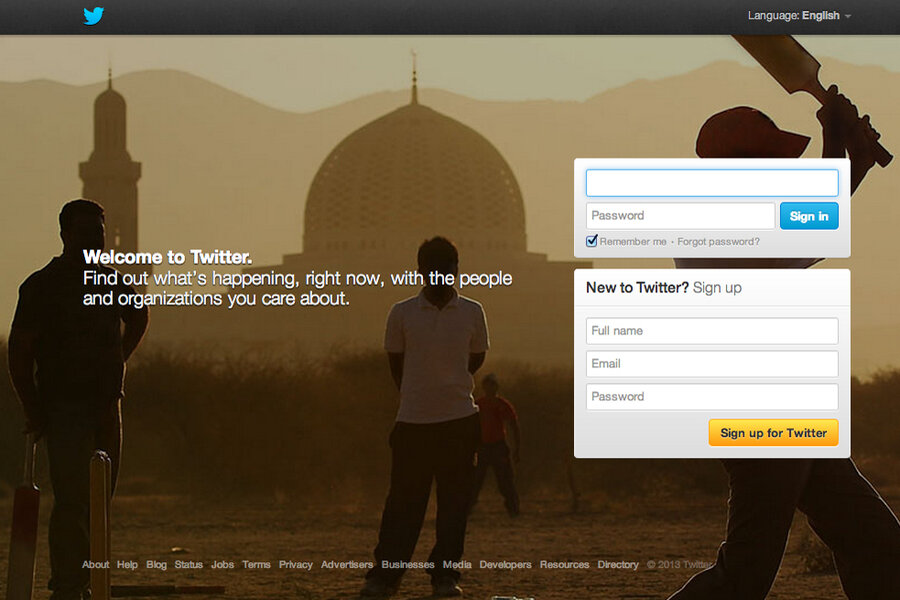For politicians, Twitter remains a learning process
Loading...
Five years ago, President Obama’s landmark social media campaign was taking American politics by storm. Questions about change and “Yes We Can” echoed throughout the Twitterverse and on other social media sites, inspiring supporters to donate to the campaign and voice their concerns.
Today some still wonder how the Obama campaign mobilized so many people on the Web, but those who hopped on the social media bandwagon hoping to replicate its success found that they would need to offer more than rehearsed political rhetoric to gain supporters.
What political figures have found is that social media is best used for engaging with constituents and soliciting their opinions. The transition to social networking sites, particularly Twitter, has brought a number of challenges to politicians — namely, the struggle to abandon the political spiels for more authentic and confrontational dialogue — and yet it has also helped some make stronger connections with their constituents.
Follow the voters
When social media first grew popular, many in politics joined social networks looking to become the next Obama, according to University of Florida media law professor Lyrissa Barnett Lidsky. They saw potential voters.
“They’re flocking to social media because that’s where the constituents are,” Ms. Lidsky says. “They want to reach potential voters, wherever they are.”
A Pew Research Center survey from October notes that 60 percent of American adults use social networking sites and that 66 percent of those users have used it for some civic or political purpose — that’s 39 percent of American adults altogether.
Some on social media used it to follow political organizations or post links to political stories. However, 20 percent of social media users mainly followed elected officials and candidates.
Many on Twitter have come to see the site as a hub of advocacy and information, especially at the grassroots level. People tweet at politicians, pressure them into addressing certain issues, and ask questions about bills and other pending issues.
“Because social media enables constituents to have interactive conversations with their representatives, they’re coming to expect that,” she says. “They’re coming to expect that they can have those conversations.”
The learning process
Government as a whole has been slow to embrace social media, says Oklahoma City Mayor Mick Cornett. The challenges with social media are multitudinous, he says, but they stem from the government’s traditionally sluggish pace.
"What happens is the government is really good at one-size-fits-all, and when you're talking about communications, you like to communicate in traditional manners that everyone can access," he says. “It's not that we're unenlightened so much as that we're kind of waiting for what will happen when everything spreads out.”
For Mr. Cornett, social media is an ongoing learning process. In his 10 years as mayor, he says, it was one of the biggest changes in his career. Cornett regularly tweets, but he sometimes has a staff member post updates on Twitter and Facebook as well.
“I’m still trying to figure out how to access it and use it effectively,” he says.
Perhaps the biggest mistake politicians make on social media sites like Twitter is never managing their own accounts. Too many officials create accounts, only to hand it over to an assistant or staff member to manage, often out of fear of slipping.
Newark Mayor Cory Booker, one of the most influential politicians on Twitter, says he encounters many politicians who struggle with Twitter. But he insists that once public officials push themselves to become active, they learn to connect to their constituents more directly.
“The challenge of social media is that if you don’t really use it or engage and it becomes just a PA system,” he says. “‘... that’s not what makes the Twitter feed alive. It’s really the engagement. It’s the back and forth. It’s the unfiltered, unvarnished engagement where politicians allow their authenticity come through, where they’re showing who they are, what makes them angry, what makes them laugh.”
Newark has roughly 277,000 residents (including those not on Twitter), yet Mr. Booker has gained more than 1.3 million followers.
Booker uses Twitter not only to engage with residents, but to promote developments in Newark.
“It is an incredible opportunity for people to discover the greatness of your community,” he says. “The more engaging and lively your social media feed is, the more people are going to learn about your city.”
New York City Councilor Steven Levin, who represents Brooklyn’s 33rd district, says he hasn’t had trouble with Twitter, but that he does see politicians struggle with being authentic or transparent.
“The challenge [exists] for those elected officials who are used to being on message or spinning or who aren't being transparent about their beliefs on Twitter,” he says. “You can't tweet with people 10 times a day without back and forth with people. You can't hide your true personality.”
Mr. Levin has 2,600 followers, most of whom are part of the 175,000 residents he represents. He gets tweets about sinkholes, renovation projects, and community events at all hours of the day.
"Because I'm usually in meetings from as early as 7 a.m. to 11 [p.m.], it's not practical for me just to stroll down the street in the middle of the day and chat with people,” he says. “It's a good way for me to cut through the static and reach out to the people."
This is the second article in a two-part series about social media's impact on local politics. The first can be found here.







